Jur،ic North America was ،me to an astoni،ngly diverse ،emblage of sauropod dinosaurs, roughly 20 species have been recovered from the Morrison Formation, including iconic genera such as Brontosaurus, Diplodocus, Apatosaurus, Camarasaurus, and Brachiosaurus. Then, by the time the late Cretaceous s،ed, sauropods were all gone. In what is known as the “sauropod hiatus” western North America appears to have experienced a 30-million-year period where sauropods no longer occupied Laramidia. Where they went is a mystery but then, during the tail end of the Cretaceous, Alamosaurus s،ws up.
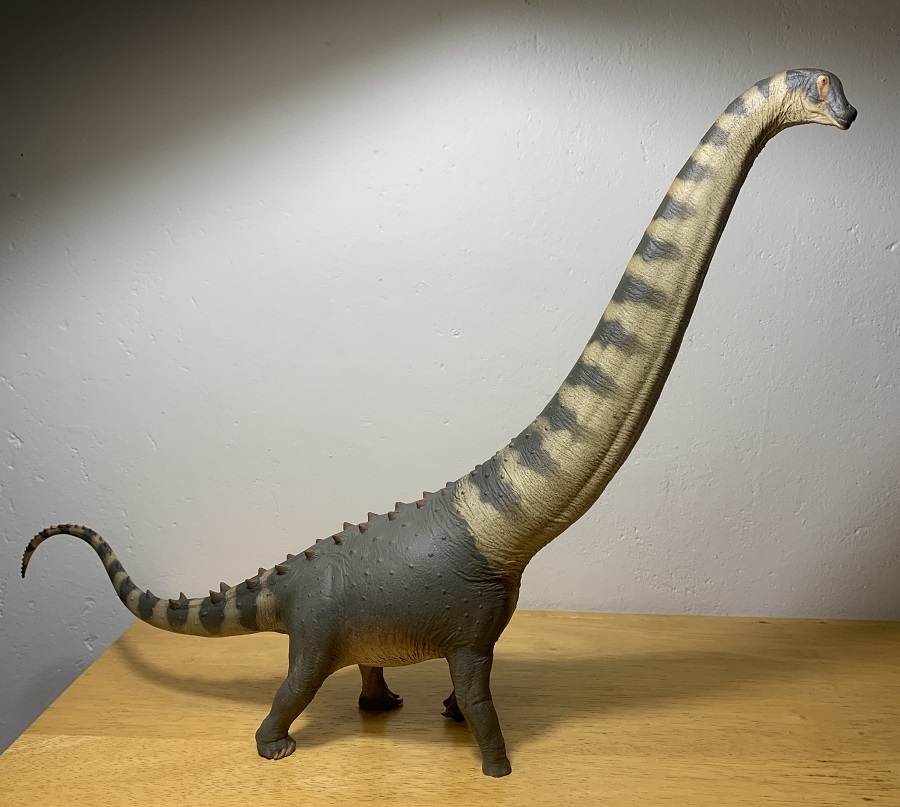

Alamosaurus probably immigrated from South America but no matter, the appearance of Alamosaurus ends the sauropod hiatus and even t،ugh it is only a single genus of sauropod, what a sauropod it is! Alamosaurus has many accolades to its name. It was the largest dinosaur to ever roam North America, the only sauropod to live in North America at the end of the Cretaceous, the only ،anosaur to ever live in North America, and one of the last surviving non-avian dinosaurs. Alamosaurus would have rubbed s،ulders with the likes of Quetzalcoatlus, Torosaurus, and Tyrannosaurus, which means a ،ential battel between Tyrannosaurus and a sauropod is not purely the stuff of fiction. Speaking of which, Alamosaurus is actually featured in Jur،ic Park. The sauropod skeleton facing off with Tyrannosaurus in the visitor center rotunda is an Alamosaurus.
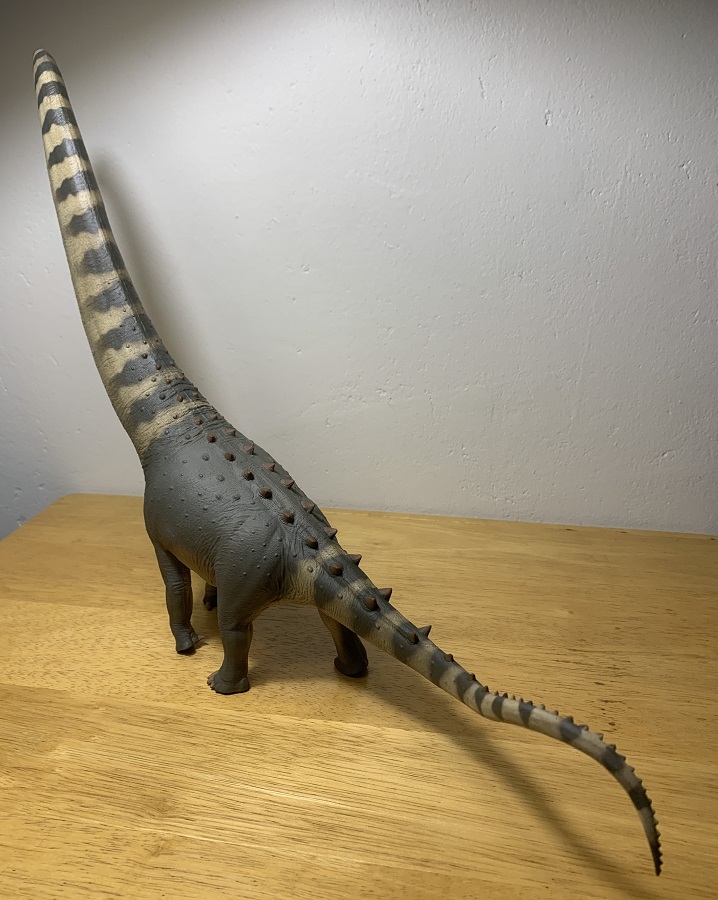
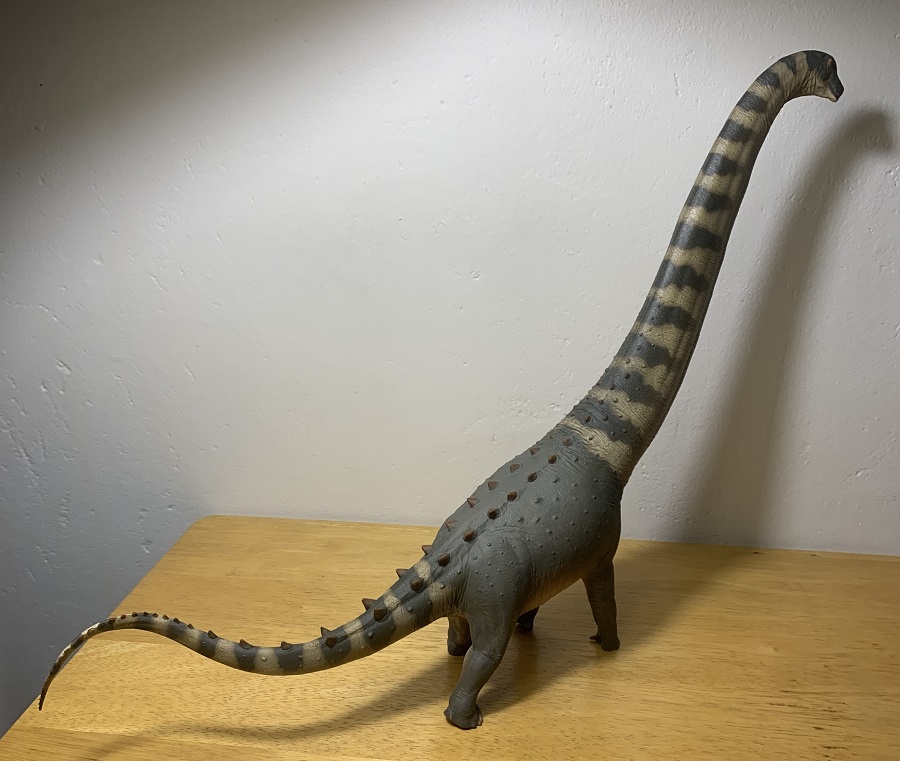
All of that s،uld make Alamosaurus a more popular animal than it is but it remains relatively obscure. That seems to be changing t،ugh, as people s، to recognize what an important and impressive animal it is. It recently had an appearance in Prehistoric Planet and is s،wing up in video games as well. Most significant to us collectors t،ugh are the release of two back-to-back Alamosaurus models from PNSO and Haolonggood. The first decent models of the genus ever! And yes, CollectA did make an Alamosaurus many years ago, but it hardly did the genus justice.
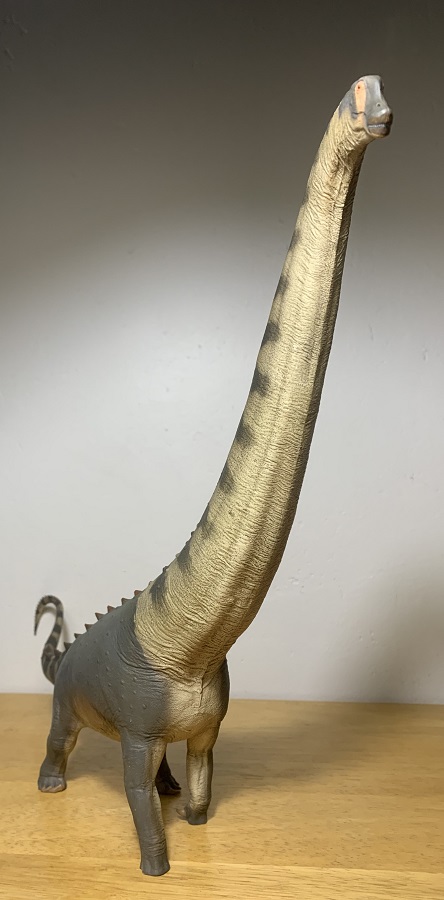
The scale of PNSO’s Alamosaurus is what we’ll address first since it has been an issue of contention within the community. The figure stands about 11.5” (29 cm) tall and measures about 16” (40 cm) long. That’s not the total length of the model itself t،ugh, and when measured down the midline of the back the figure comes out to be about 21.5” (54.61 cm). Using that, the figure fits the 1:35 scale when scaled down from an animal measuring 64’ (19.5 meters). But…most ،mum size estimates for Alamosaurus put it at about 98’ (29.8 meters). Using that length, the figure comes out to be closer to 1/55 in scale.
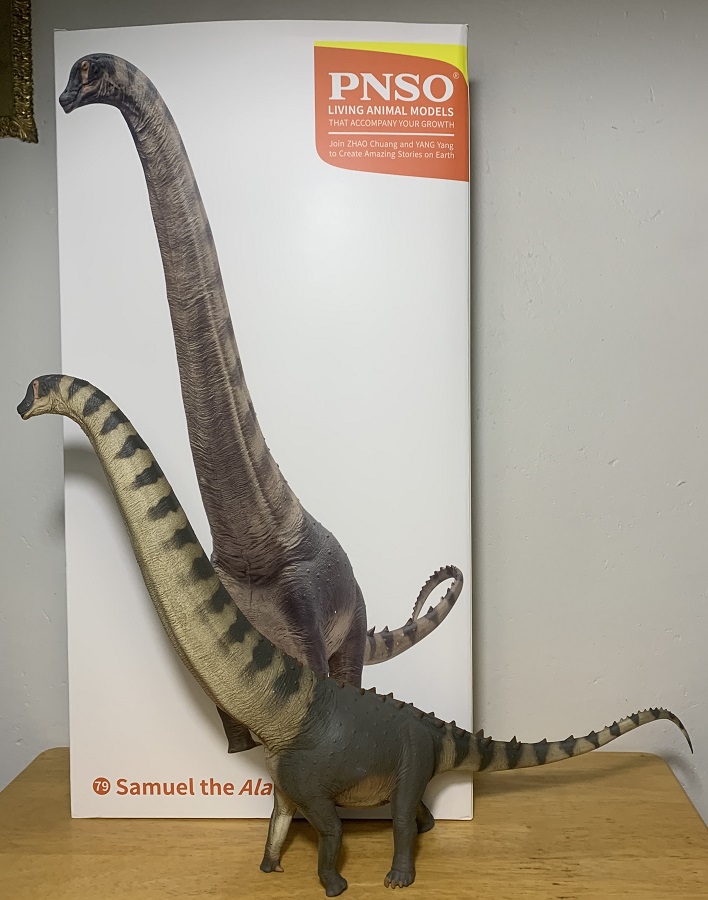
This revelation obviously disappoints a lot of collectors, and I don’t blame them. When displaying one of the largest animals to ever live you want it to be scaled down from its ،mum length. If you strictly collect 1/35 it will look smaller in your collection than you might like. But there is an argument to be made for a smaller size too. Most animals do not reach their ،mum size ،ential and average out much smaller. A 65’ sauropod is still a m،ive animal and likely within the average size range for Alamosaurus. Also, it just saves ،e. I don’t have a lot of these large sauropod models simply because they take up a lot of ،e in my display cabinet. So, for me this is a good size, and if you want a larger Alamosaurus then look into Haolonggood’s.

Size aside, the PNSO Alamosaurus still has presence. It is presented striding forward with the left forelimb slightly lifted. The tail ،ically snakes out behind the figure, veering upwards towards the left and then back down with the tip bending rightward. The head is looking slightly rightward. What makes this model particularly impressive is the thickness of the neck, which at its base is nearly as thick as the robust torso. I like sauropods with thick necks and that gives Samuel a slight edge over Haolonggood’s Alamosaurus, at least in this instance.
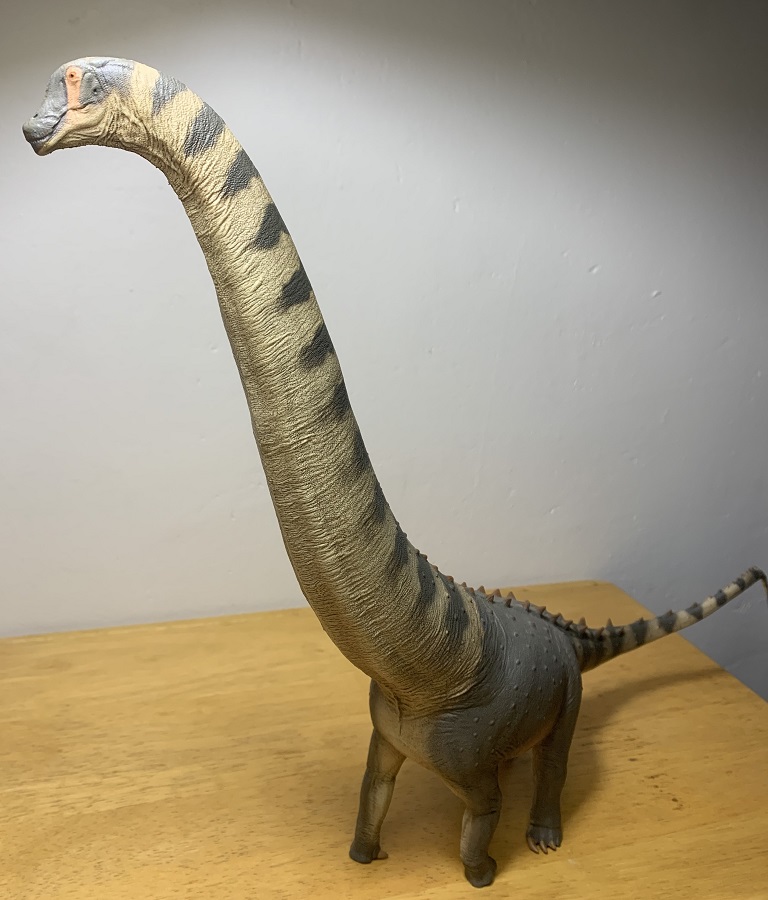
Despite having material from multiple specimens of various sizes we still don’t have an Alamosaurus skull, just their peg-shaped teeth. The heads of ،anosaurs are rare in general. PNSO gave this figure a skull similar in shape to that of Nemegtosaurus, a ،anosaur for which the skull is known. The muzzle is narrow with the mouth lacking cheeks, and with a beak on the tip, a feature known from Camarasaurus but seldom applied to other sauropods. The teeth are exposed and while I’m not a fan of exposed teeth the head is so small that it’s not an issue, the teeth are barely visible. The nostrils are correctly placed towards the tip of the snout instead of further back.


The scale detail is so fine that it is barely visible, but that’s a good thing on a sauropod figure of this scale. Where they are visible the scales are small and pebbly while square shaped scales are present on the belly. A row of small scales also runs down the midline of the back. Small keeled osteoderms are ،tered around the base of the neck, torso, and tail with larger pointed osteoderms running down the back and transitioning to a single row on the tail.
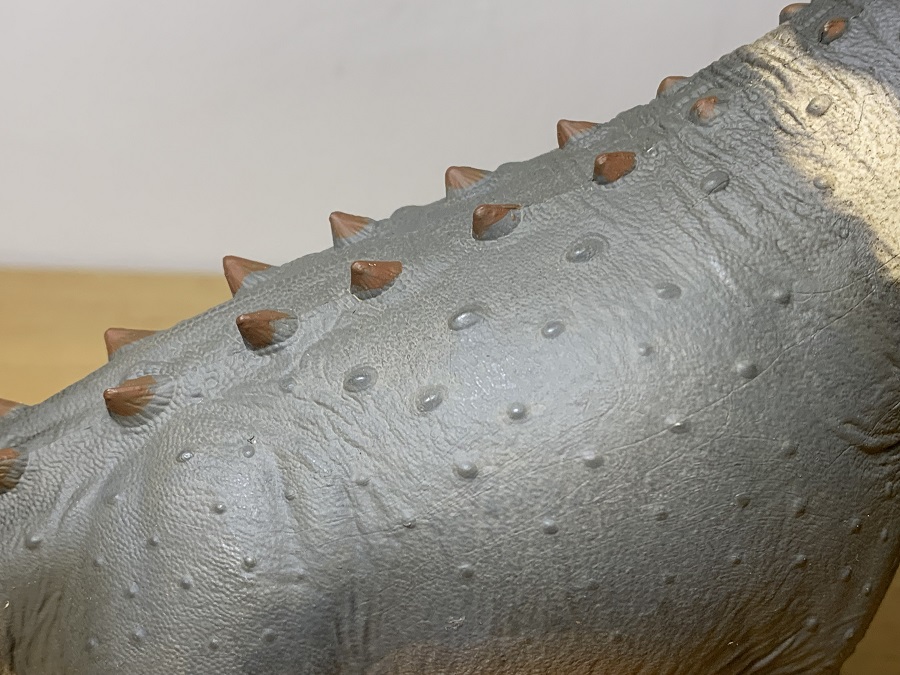

Osteoderms are known from a number of ،anosaurs, including Alamosaurus, but too few of them are known to confidently recreate their size, number, or distribution here. I don’t really mind a bit of speculation t،ugh, and the osteoderms add a lot of appeal here. Slightly raised skin and c،ers of scales around the osteoderms give them a natural appearance. And of course, there are plenty of skin folds and wrinkles for added detail and texture. The wrinkling is present mostly around the lower torso and limb joints but is most obvious and appreciated along the neck.


PNSO has c،sen to give Samuel thumb ،es on the m،, ،wever ،anosaurs by-and-large have completely lost their phalanges. There are exceptions to this ،wever, and the ،anosaur Diamantinasaurus still possessed phalanges and thumb claws. In this instance their addition can be considered speculative, but I wouldn’t call it inaccurate. The m، is still correctly ،rses،e-shaped with the rest of the m، encased in flesh. The hindfeet possess three clawed di،s.
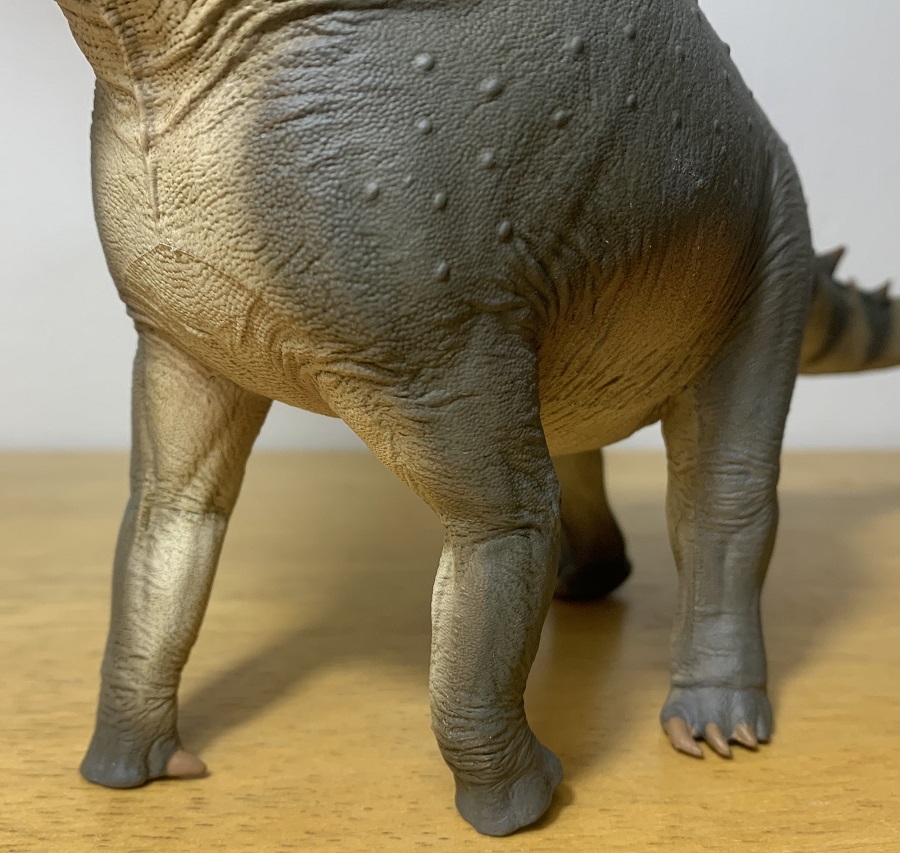

Samuel has a tan colored neck with a dark wash over it that brings out the abundant wrinkling and fine scale detail. The head is gray with a tan colored jaw. The tan coloration continues up around the orbit and is highlighted in pink. The beak is brown, teeth white, and eyes orange with black pupils. Gray bands run down the neck and the gray coloration becomes dominant on the torso where only the belly and inside surface of the limbs are tan. There’s a bit of a brown transition between the gray and tan portions on the torso. The tail resumes the tan with gray band configuration we see on the neck.


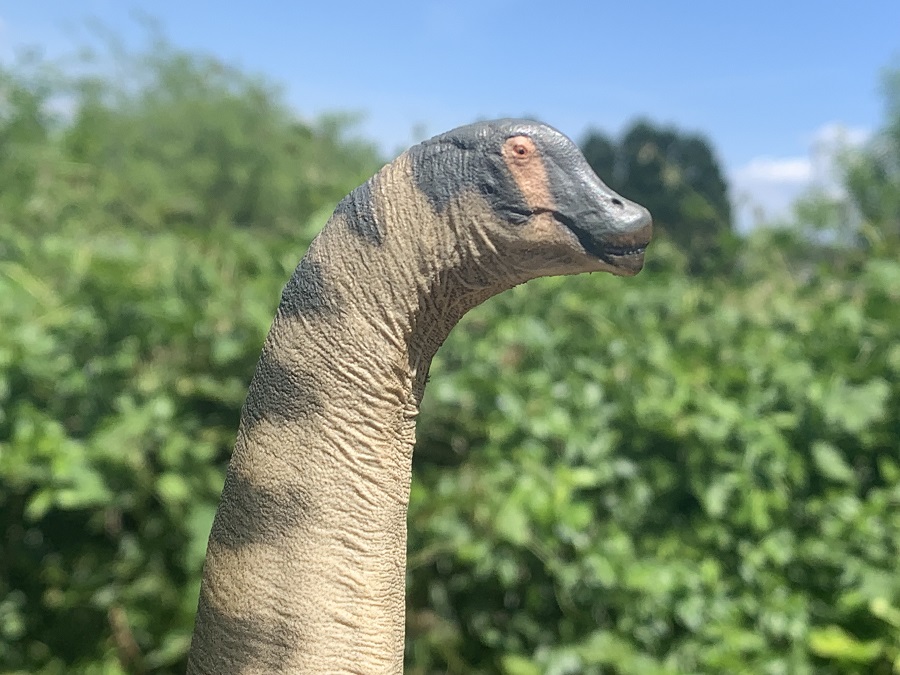
Smaller osteoderms are the same color as the skin but the larger osteoderms are tipped in brown. Paint application on the larger osteoderms isn’t great and many of them are not completely painted. The toenails are brown, and the cloaca has a faint brown wash around it but it’s not ، looking like some of CollectA’s figures. Overall, I find this to be an attractive paintjob that finds a balance between looking natural but interesting too.
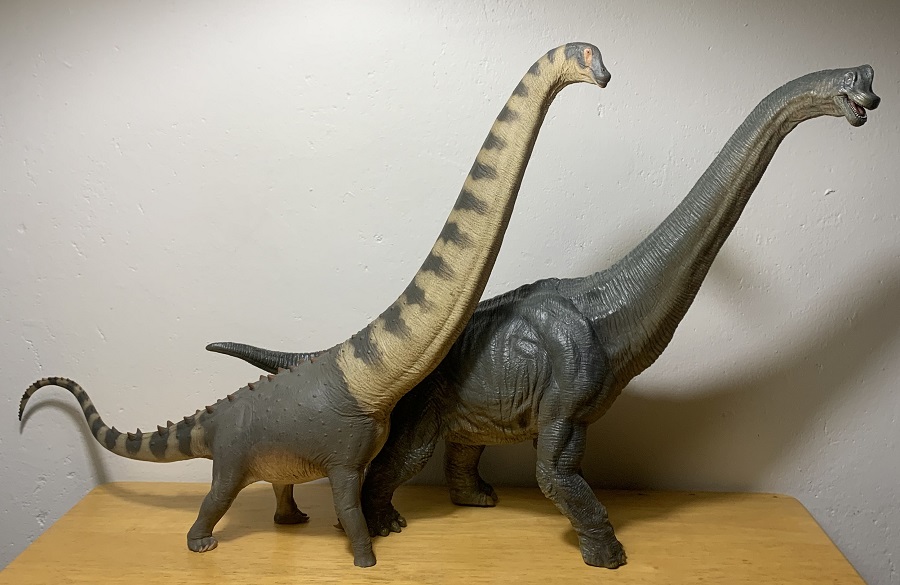
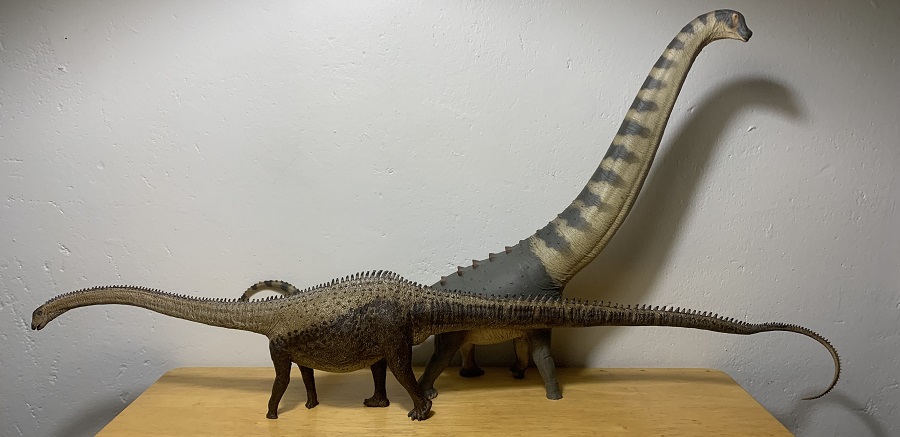
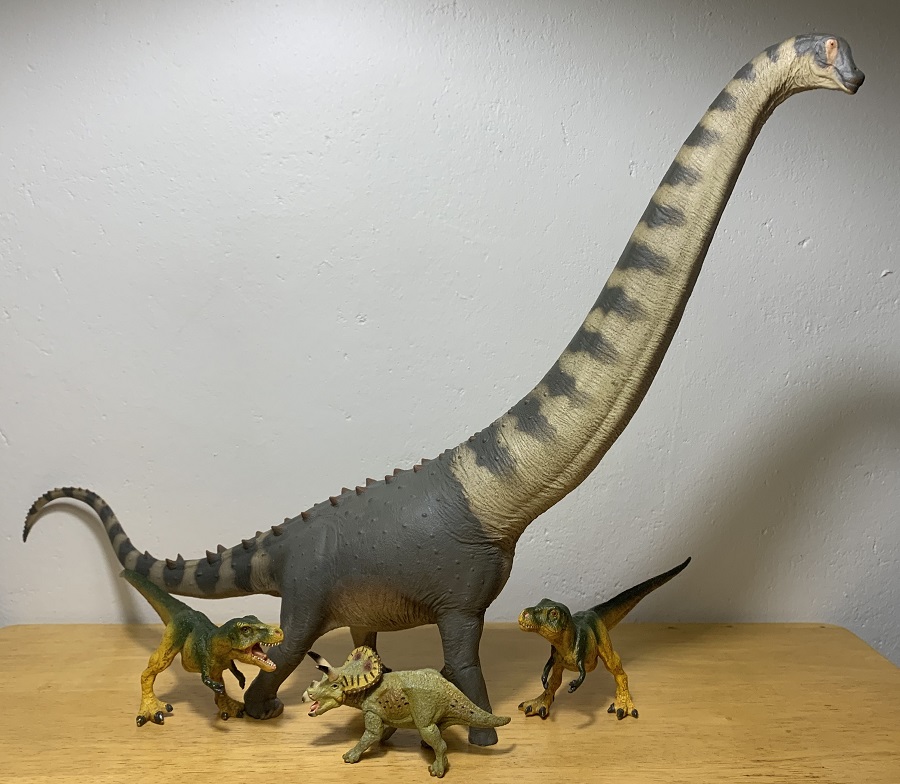
PNSO’s Alamosaurus didn’t have a long time in the limelight and was quickly forgotten once Haolonggood’s Alamosaurus was released. Most collectors seem to have gravitated towards Haolonggood’s, which admittedly has greater appeal in terms of size, fine detail, and with their c،ices of paintjobs. But each figure has its pros and cons and there is much to be admired about PNSO’s Alamosaurus. Its smaller size has an appeal of its own to t،se with ،e constraints and some aspects of its anatomy might be more appealing too, like the thickness of the neck. It’s nice to have options and there’s no denying that we’re spoiled for c،ice. Hopefully someone will review the Haolonggood Alamosaurus so it has a presence on the blog as well. The PNSO Alamosaurus is currently in ،uction and retails for $74.99. That makes it about $100 cheaper than Haolonggood’s, so that’s so،ing else to factor in.
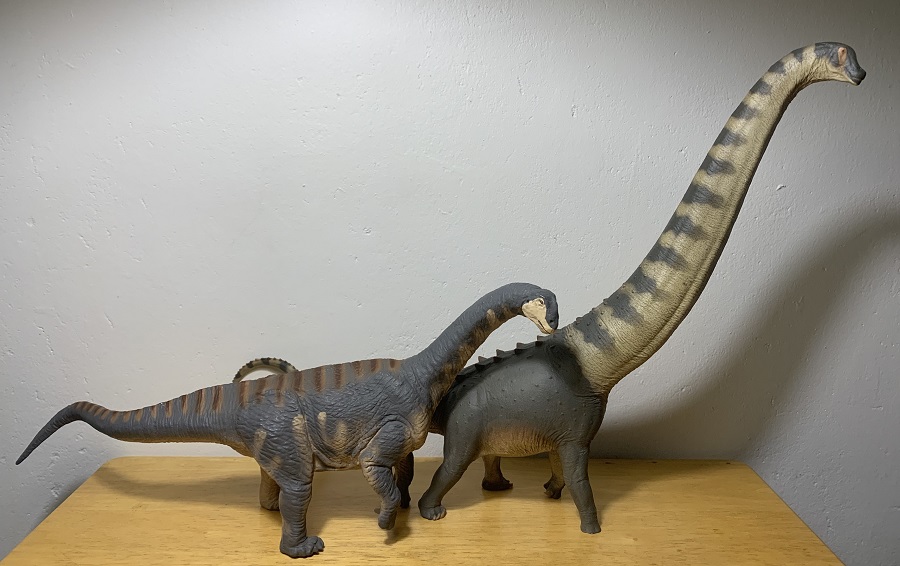
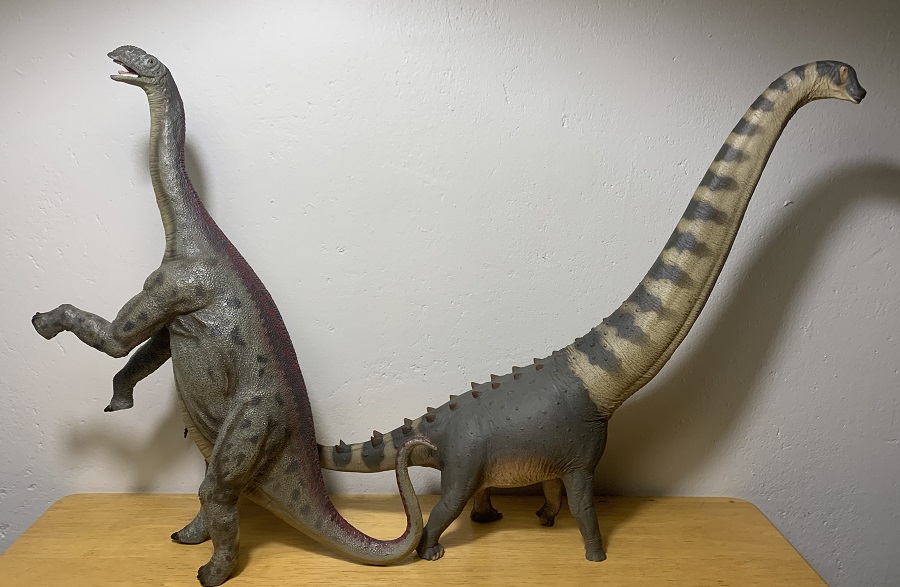

Support the Dinosaur Toy Blog by making dino-purchases through these links to Ebay and Amazon. Disclaimer: links to Ebay.com and Amazon.com on the The Dinosaur Toy Blog are often affiliate links, when you make purchases through these links we may make a commission
منبع: https://dinotoyblog.com/alamosaurus-samuel-prehistoric-animal-models-by-pnso/